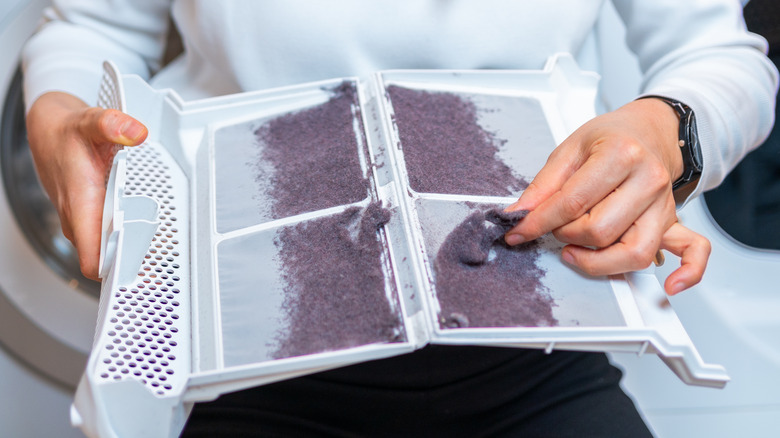Is Dryer Lint Really The Key To A Warmer Home During Winter?
We may receive a commission on purchases made from links.
During winter, cold air can seep through cracks around your windows and exterior doors, but you may be able to combat this with dryer lint. Rather than going out and buying a draft stopper (this Holikme Weighted Door Draft Stopper is $26 on Amazon), you can make your own by repurposing old socks and dryer lint. This is a great way to cut down on waste and reuse your lint while helping to keep your home warmer throughout the winter season. While your homemade door stopper should prevent most drafts, it may not work as well as traditional versions because it will be lightweight and could get moved away from the crack beneath your door.
For those with fireplaces, you could also consider saving your dryer lint and old toilet paper rolls to create your own fire starters. This is a great option if you've run out of scrap paper or decide to have a fire at the last minute. Since dryer lint is highly flammable, it works to get a fire going. But if you use lint to make a draft stopper, you'll want to be careful. If your lint draft stopper is near a source of heat, such as a radiator, or exposed to any sparks, it could pose a fire risk.
Reusing dryer lint to keep your home warm
To make a simple fire starter, stuff empty cardboard toilet paper rolls with the lint you've saved. Each time you're ready to get a fire going, place one starter in your fireplace and carefully light the lint. Since lint is so flammable, it will ignite fast, helping to get the wood burning as well. You can make several of these starters in advance or whenever you have an abundance of lint and save them in a bag or container.
For a quick DIY draft blocker, take a long sock, such as a tube sock or knee-high sock, and fill it with your lint. Continue packing your lint into the sock until it is firm before tying off the end. Your upcycled draft stoppers can then be placed on windowsills, beneath doors, or wherever you notice a draft. One downside to this hack is that you will need to save a fair amount of lint before you'll be able to fill a sock. To get better coverage, you may want to make several draft stoppers, which will require even more lint.

